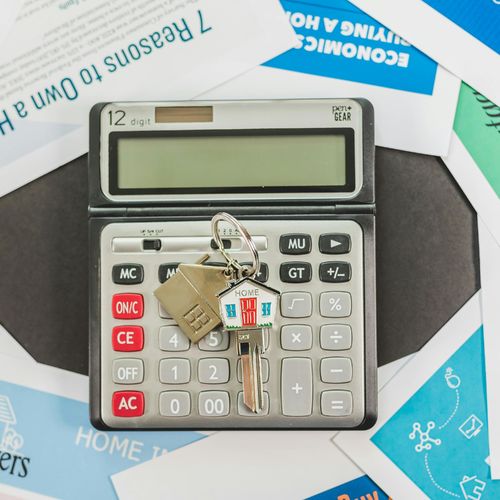When buying a home, it’s important to think beyond just your immediate needs and preferences. While the property may be perfect for you now, you’ll also want to ensure that it holds strong resale value for the future. Whether you’re planning to sell in a few years or decades down the road, resale value is a key consideration. Here’s what buyers should look for in a home’s resale value:
1. Location, Location, Location 📍
-
Neighborhood: The home’s location is one of the most important factors influencing its resale value. Research the neighborhood’s growth potential, safety, schools, and amenities like parks, restaurants, and shopping centers.
-
Proximity to Work and Transportation 🚉: Homes close to major highways, public transportation, and business centers often have higher resale value due to the convenience they offer.
2. School District 🎓
-
A home located in a top-rated school district can significantly increase its value. Many buyers, especially families with children, prioritize living in areas with good schools. Even if you don’t have children, purchasing in such districts can help preserve or boost your home’s resale value over time.
3. Size and Layout 📏
-
Square Footage: Larger homes tend to have higher resale values, though this can vary by market. However, it’s not just about the total square footage but how the space is utilized. Homes with a functional layout and spacious rooms generally appeal to more buyers.
-
Number of Bedrooms and Bathrooms 🚪🚿: The number of bedrooms and bathrooms impacts resale value. Three-bedroom homes with at least two bathrooms are usually in demand, though this can vary based on location and target buyer demographics.
-
Flexible Spaces 🛋️: Modern homebuyers look for adaptable spaces, such as home offices or additional rooms that can be easily repurposed. Open-concept layouts are also popular because they allow for customization and flow.
4. Condition of the Home 🛠️
-
Structural Integrity 🏗️: A home that’s well-maintained or has been recently renovated will have a higher resale value. Buyers are looking for homes that are move-in ready, so look for properties with good foundations, roofs, and HVAC systems.
-
Updates and Renovations 🔨: Kitchens and bathrooms are especially important. Homes with updated, modern finishes (e.g., new countertops, stainless steel appliances, updated cabinets) usually fetch a higher price.
-
Energy Efficiency 🌱: Energy-efficient homes, including updated insulation, windows, and appliances, are increasingly in demand due to growing interest in sustainability and energy savings.
5. Curb Appeal 🌳
-
The exterior of the home is the first thing potential buyers will see, so it’s essential that it makes a strong, positive impression. Well-maintained landscaping, fresh paint, and a well-kept yard can make a big difference in how buyers perceive the property.
-
Outdoor Space 🌞: Homes with usable outdoor spaces (patios, decks, gardens) are often valued more highly, especially in areas with pleasant weather.
6. Home Age and History 🏚️➡️🏠
-
Newer homes tend to be easier to sell and often hold higher resale value, thanks to newer construction materials, systems, and appliances. However, older homes that are well-maintained or have been renovated may also retain value if they’re in a desirable location.
-
Renovation Potential 🔧: Look for homes that allow for future improvements or expansions. A home with an unfinished basement or attic, or one that has space to add a bathroom or bedroom, can offer a great opportunity for a higher resale value down the line.
7. Unique Features and Amenities ✨
-
Pool, Garage, or Storage Space 🚗🏊♂️: Special features like a swimming pool, large garage, or extra storage space can be attractive to certain buyers. However, keep in mind that not all features add value in every market. It’s important to consider what’s in demand in your specific area.
-
Smart Home Features 📱: The integration of technology, such as smart thermostats, security systems, and lighting, is becoming increasingly popular and may appeal to future buyers.
8. Market Trends and Demand 📈
-
Future Development Plans 🏗️: Investigate whether the area is experiencing growth or development, which could influence home values. New infrastructure, like improved public transport or new commercial areas, can raise property values over time.
-
Local Market Conditions 🏙️: Understanding whether the market is currently a seller’s or buyer’s market can give you an idea of how quickly the home may appreciate. Homes in areas with consistent demand (e.g., urban centers, proximity to amenities) are more likely to retain strong resale value.
9. Home’s Historical Value 🕰️
-
Comparables 🔍: Investigating the sale prices of similar homes in the area can help you gauge the home’s potential resale value. Look for properties with comparable size, age, and condition.
-
Neighborhood Trends 📊: Consider the history of property values in the neighborhood. A declining or stagnant market may signal trouble for resale, while a neighborhood that’s up-and-coming could offer long-term growth potential.
10. Avoid Over-Personalized Customizations 🎨
-
While you may love a bold, customized design, it’s important to remember that resale value is about appealing to a broad group of buyers. Avoid making overly unique or niche choices, such as a highly themed kitchen or room colors, as they may not resonate with future buyers. Neutral colors and adaptable features tend to have a broader appeal.
Conclusion 📝
When buying a home, it’s essential to think about its potential resale value. Focus on key factors like location, the home’s condition, its layout, and local market trends. By keeping these aspects in mind, you’ll not only find a home that fits your needs today but one that will also stand the test of time and retain its value for future buyers. 🏡💸
Partners Realty Group
(865) 789 – 6677
Your Home, Your Future, Our Priority.


